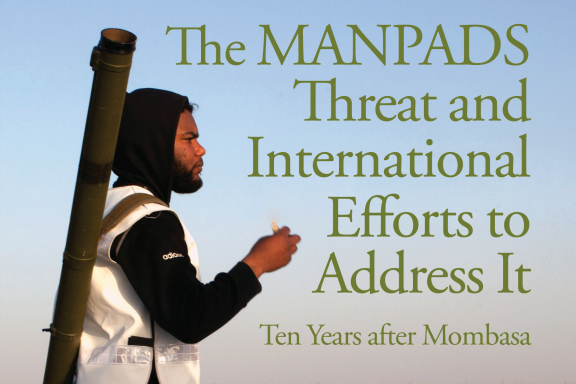
Report Examines MANPADS Threat and International Efforts to Address It
On November 28, 2002, terrorists fired two Soviet-designed SA-7 man-portable air defense systems (MANPADS) at an Israeli plane destined for Tel Aviv as it departed from Moi International Airport in Mombasa, Kenya. The missiles missed their target but the incident was a wake-up call for governments around the world. Shortly after the attack, the United States created an inter-agency task force to counter the threat posed by MANPADS, with other countries following suit. These countries launched several initiatives aimed at securing and destroying surplus, obsolete and poorly secured stockpiles of missiles; strengthening controls on international transfers of MANPADS; and improving information sharing on the international trade in these weapons. But are these efforts enough?
In the report, “The MANPADS Threat and International Efforts To Address It”, Matt Schroeder, Director of the Arms Sales Monitoring Project, assesses the terrorist threat from MANPADS, evaluates efforts by the international community to curb this threat, and proposes additional measures that governments can take to further reduce the illicit proliferation and use of MANPADS.
The Federation of American Scientists would like to thank the following individuals and institutions for their invaluable contributions to this report: James Bevan, Jeremy Binnie, Peter Courtney-Green, Gene Crofts, Alan Flint, Andy Gleeson, Jose Manuel Heredia Gonzalez, Paul Holtom, J. Christian Kessler, Stephanie Koorey, Jonah Leff, Cheryl Levy, Maxim Pyadushkin, Steve Priestley, Saferworld, Small Arms Survey and officials from the Organization of American States, the Organization for Security and Co-operation in Europe, the United Nations Regional Centre for Peace, Disarmament and Development in Latin America and the Caribbean and the Wassenaar Arrangement , along with officials from numerous governments. Without their talent and support, this study would not have been possible.
Satellite imagery of RAF Lakenheath reveals new construction of a security perimeter around ten protective aircraft shelters in the designated nuclear area, the latest measure in a series of upgrades as the base prepares for the ability to store U.S. nuclear weapons.
It will take consistent leadership and action to navigate the complex dangers in the region and to avoid what many analysts considered to be an increasingly possible outcome, a nuclear conflict in East Asia.
How the United States responds to China’s nuclear buildup will shape the global nuclear balance for the rest of the century.
The bootcamp brought more than two dozen next-generation open-source practitioners from across the United States to Washington DC, where they participated in interactive modules, group discussions, and hands-on sleuthing.